Every year, the nation experiences many high wind events, including hurricanes and tornadoes, and significant straight-line winds in some years. These high wind events frequently damage buildings; that damage must either be repaired or the building demolished and re-built. The visual image this damage creates often makes owners of similar buildings wonder about the wind resistance of their own buildings (both residential and commercial). As a result, some owners seek expertise in determining the wind resistance of their buildings and look to retrofit the building with improved wind resistance.
There is not much information published about wind retrofitting. This article intends to provide some helpful resources to the practicing structural engineer should they be retained to provide wind retrofitting expertise.
This article addresses resources that can be used for all buildings, including residential and commercial. However, retrofitting a residential building is not frequently attempted; it seems to be more common to build a residential building back stronger once it has been damaged. On the other hand, commercial buildings are often retrofitted, especially buildings used as critical facilities in a community. Manywind damaged schools, fire stations, and hospitals are examples of completed wind retrofit projects.
Several federal and state grant programs fund wind retrofits. Improved wind resistance of critical facilities is intended to improve resiliency in the community and help speed up recovery from disasters. Understanding the problem and using all available retrofit resources for wind retrofitting is essential for the structural engineer.
The following is a review of all of the resources the author researched. A summary from each resource is provided so the reader can determine how each resource might benefit their particular project.
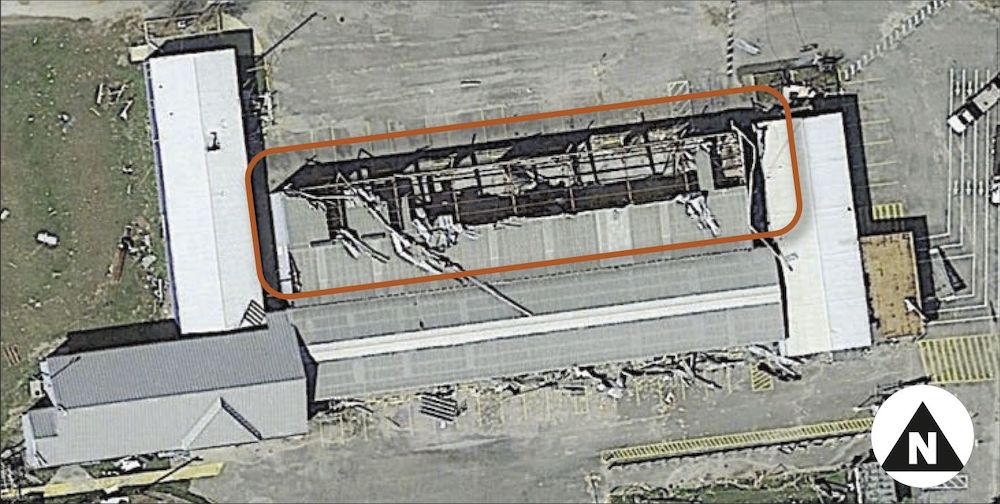
Hurricane Michael
FEMA’s Recovery Advisory 1 (2019) focuses on the performance of critical facilities during Hurricane Michael. It provides good examples of successes and failures of retrofitting and includes a helpful five-step process for improving wind resistance.
This document does a good job of explaining the care that must be given to assessing all components of the wind resistance elements so that retrofit dollars are spent wisely. An excellent example is illustrated in the damage shown in Figure 1, where the door frames failed during the high winds, which caused the doors to fail. The internal wind pressure caused by the door failure also damaged the roof system parallel to the doors. Ultimately, grant funds were spent on new doors.
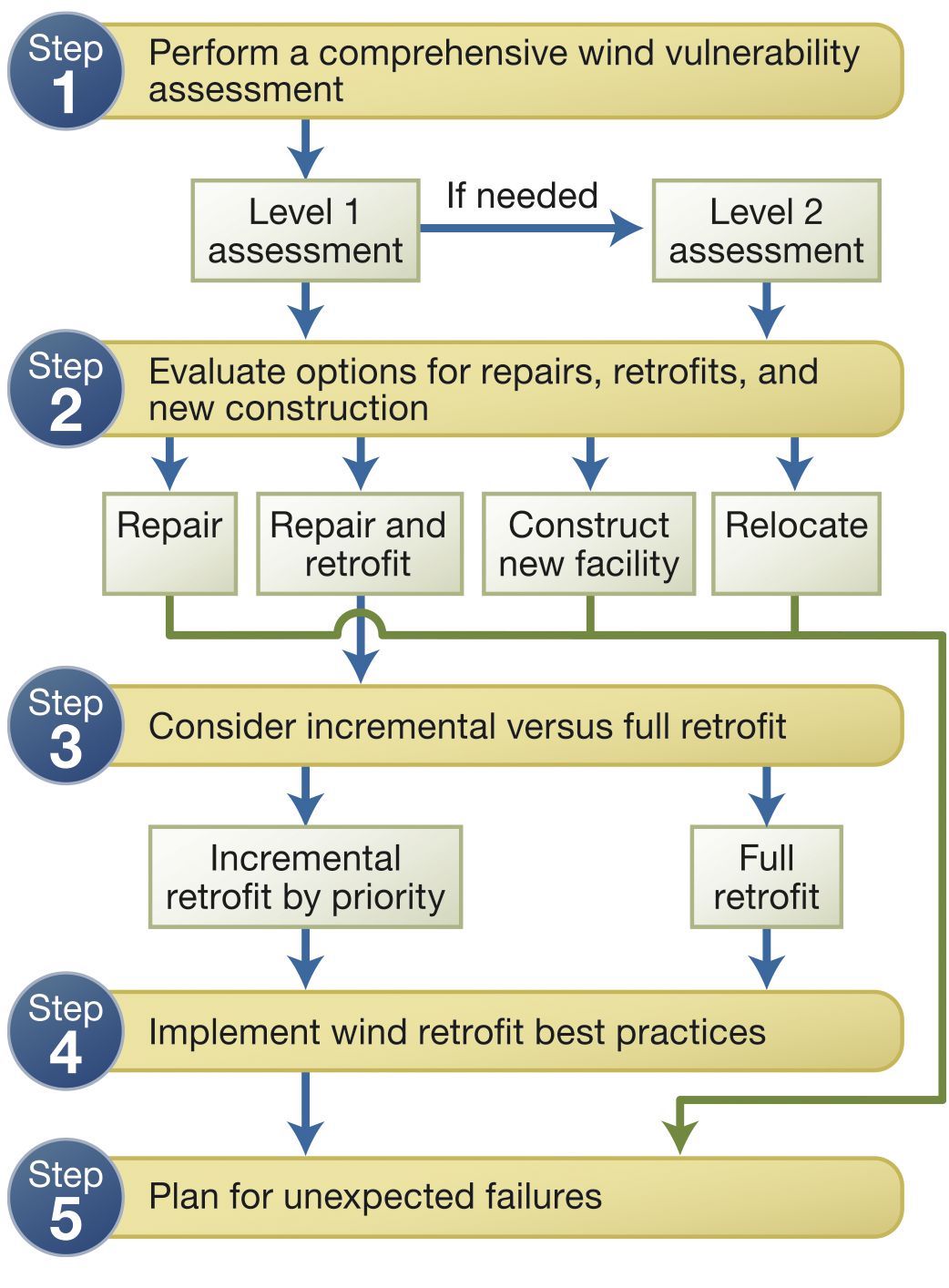
This recovery advisory suggests a five-step process for improving wind resistance by retrofitting. This process is shown in Figure 2 as a flowchart. The initial step is a comprehensive vulnerability assessment so the engineer can determine what the most critical retrofits might be and how much other parts of the building might be affected if the most critical element was damaged by wind.
There are numerous examples throughout the resources that indicate thorough assessments were not made initially. Therefore, when high winds impacted the buildings, the retrofitted elements did not perform as needed or expected because some other element was not sufficiently strong to resist the wind load. Figure 1 is a good example – new strong doors were installed, but the door frames were not reinforced to be able to resist the wind pressures imparted to the doors.
Table 1 lists some common high wind vulnerabilities with associated possible common failure modes and some common retrofit methods used for listed elements.
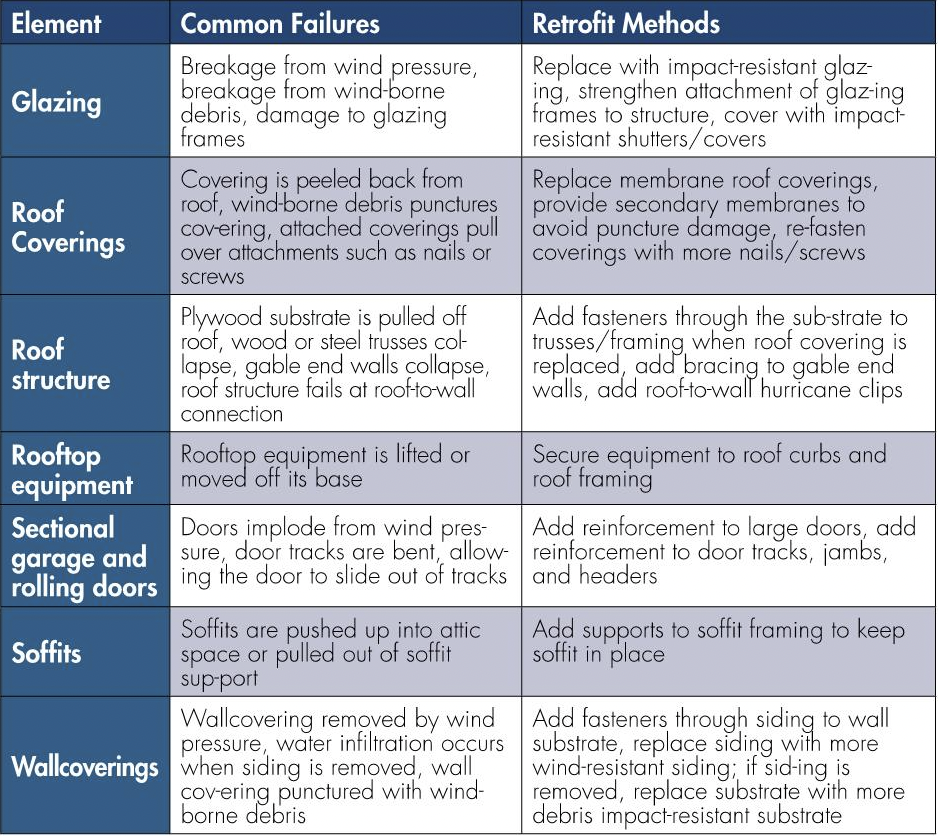
Home, Commercial, and Multifamily Programs
FORTIFIED, by Insurance Institute for Business and Home Safety (IBHS) (last revised 2022), has programs for three different building types – homes, commercial, and multifamily buildings. The program designations are similar to FEMA P-804 (described later). There are construction standards for each building type that must be met for the building owner to receive insurance premium reductions for improving the wind resistance of their building. Some of the standards are easier to complete if included in new construction; others can be successfully completed as retrofit projects.
There are three program levels: Roof, Silver, and Gold.
Roof focuses on roof system improvements, including stronger roof surfaces better attached to the substrate, sealed decks for steep-sloped roofs, strong skylights to resist water intrusion and wind-borne debris, and roof-mounted equipment designed for higher wind pressures.
Silver focuses on glazed opening protection from wind-borne debris and wind pressure, strengthening anchorage of attached structures, impact-resistant wall systems, and parapets and false fronts adequately secured or braced.
Gold focuses on load path continuity throughout the structure.
FORTIFIED Multifamily has the same protection levels as homes, except the focus is on commercial buildings. This building type was recently added. Figure 3 below is an application flow chart of the wind improvement method for multifamily buildings.
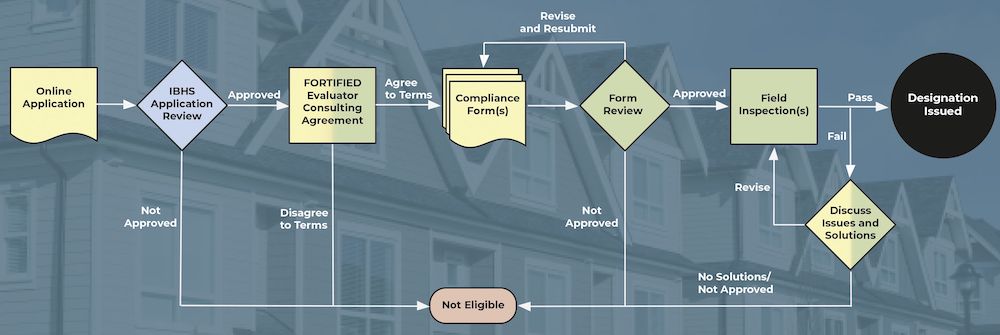
Wind Retrofit Guidance for Residential Buildings
FEMA’s P804, Wind Retrofit Guide for Residential Buildings (2010), focuses on existing residential buildings. It covers three typically vulnerable areas: roof and wall coverings, openings (windows/doors), and load path connections. However, it uses wind design information from ASCE 7-05, Minimum Design Loads for Buildings and Other Structures, which dates the FEMA document since there have been three revisions to ASCE 7 since the ASCE 7-05 publication.
The retrofit ideas are grouped into “packages” similar to the method used by IBHS noted earlier. The retrofit process is initiated with a condition assessment of the existing home before suggesting the most appropriate retrofit method.
The Basic Package focuses on the roof covering and roof structure. It includes methods to improve the performance of the roof covering (including replacing it), strengthening vents and soffits (Figure 4), and strengthening overhangs at gable end walls.
The Intermediate Package focuses on protecting openings (both windows and doors) with impact-resistant glazing or coverings and bracing tall gable end walls.
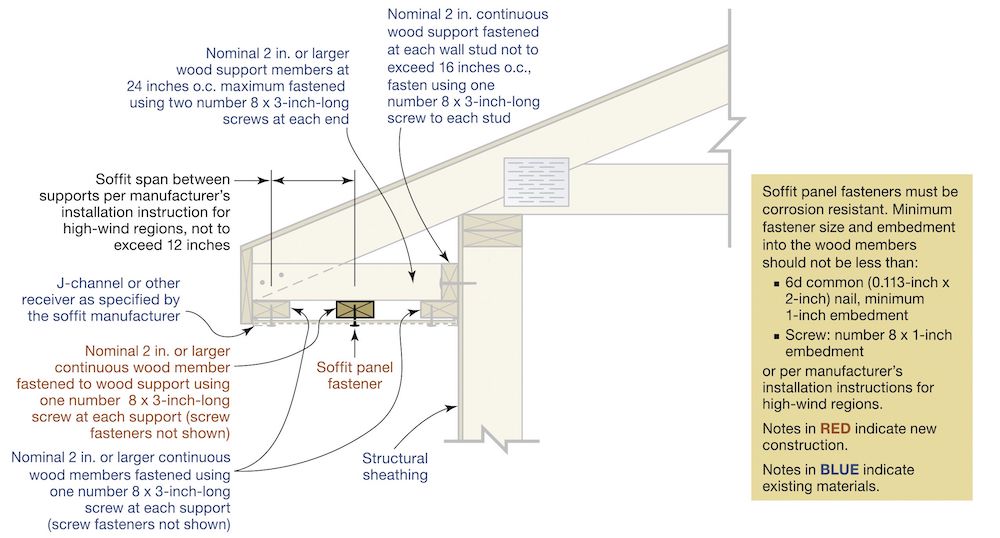
The Advanced Package focuses on load path continuity and protecting openings from design wind pressures.
Applicants who seek FEMA grant money for wind retrofitting must comply with the wind retrofit requirements of P804. The costs and benefits of each package are also discussed.
Wind Vulnerability Assessment
FEMA P-2062, Guidelines for Wind Vulnerability Assessment of Existing Critical Facilities (2019), provides considerable detail and depth on various wind vulnerabilities and materials used for construction. This document describes how those materials might fail under high wind pressures and how to test their vulnerability to high wind pressures. The vulnerabilities cover both vertical and horizontal load paths and building envelope and building equipment issues.
A table in P-2062 provides the expected wind performance of a building in various design-level wind events defined by Mean Recurrence Intervals (MRI). The table is shown here as Table 2.
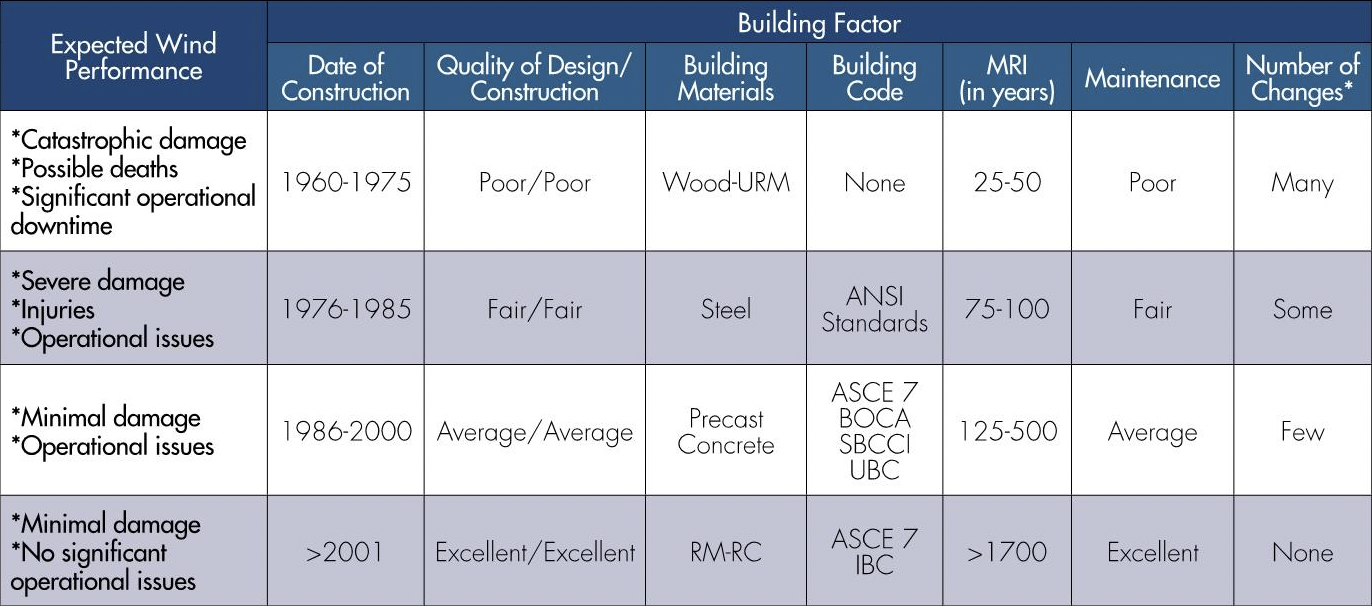
This guidance document covers the widest variety of building materials of any of the researched publications. It covers masonry (concrete block and brick), Exterior Insulation and Finish Systems (EIFS), stucco, metal panels, fiber cement siding, vinyl, and many roof system materials, including single-ply membranes, asphalt shingles, standing seam metal panels, and others.
There is a discussion of water infiltration and the impact such water has on building damage. Structural failures are described, such as that shown in Figure 5 of an end wall collapse in a relatively new metal building system.

Summary
There are several good resources for the structural engineer to use for guidance on wind retrofitting; four of the best and most complete that the author has found have been noted and summarized in this article. These resources recommend beginning a retrofit project with a vulnerability assessment of the existing building so that retrofit dollars are spent on the most effective retrofit projects. Each of the four resources provides a step-by-step process that varies by building type and age. In all cases where retrofit grants or insurance discounts are being pursued, the chosen retrofit method must be followed step-by-step.
